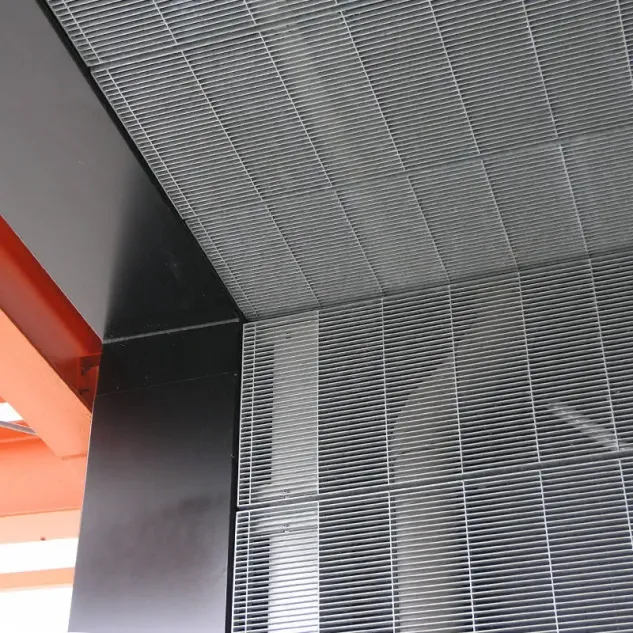- Industrial zone, South of Anping Town, Hengshui, Hebei, China.
- sales@hfpetromesh.com
- +86-18931809706
 Afrikaans
Afrikaans  Albanian
Albanian  Amharic
Amharic  Arabic
Arabic  Armenian
Armenian  Azerbaijani
Azerbaijani  Basque
Basque  Belarusian
Belarusian  Bengali
Bengali  Bosnian
Bosnian  Bulgarian
Bulgarian  Catalan
Catalan  Cebuano
Cebuano  Corsican
Corsican  Croatian
Croatian  Czech
Czech  Danish
Danish  Dutch
Dutch  English
English  Esperanto
Esperanto  Estonian
Estonian  Finnish
Finnish  French
French  Frisian
Frisian  Galician
Galician  Georgian
Georgian  German
German  Greek
Greek  Gujarati
Gujarati  Haitian Creole
Haitian Creole  hausa
hausa  hawaiian
hawaiian  Hebrew
Hebrew  Hindi
Hindi  Miao
Miao  Hungarian
Hungarian  Icelandic
Icelandic  igbo
igbo  Indonesian
Indonesian  irish
irish  Italian
Italian  Japanese
Japanese  Javanese
Javanese  Kannada
Kannada  kazakh
kazakh  Khmer
Khmer  Rwandese
Rwandese  Korean
Korean  Kurdish
Kurdish  Kyrgyz
Kyrgyz  Lao
Lao  Latin
Latin  Latvian
Latvian  Lithuanian
Lithuanian  Luxembourgish
Luxembourgish  Macedonian
Macedonian  Malgashi
Malgashi  Malay
Malay  Malayalam
Malayalam  Maltese
Maltese  Maori
Maori  Marathi
Marathi  Mongolian
Mongolian  Myanmar
Myanmar  Nepali
Nepali  Norwegian
Norwegian  Norwegian
Norwegian  Occitan
Occitan  Pashto
Pashto  Persian
Persian  Polish
Polish  Portuguese
Portuguese  Punjabi
Punjabi  Romanian
Romanian  Russian
Russian  Samoan
Samoan  Scottish Gaelic
Scottish Gaelic  Serbian
Serbian  Sesotho
Sesotho  Shona
Shona  Sindhi
Sindhi  Sinhala
Sinhala  Slovak
Slovak  Slovenian
Slovenian  Somali
Somali  Spanish
Spanish  Sundanese
Sundanese  Swahili
Swahili  Swedish
Swedish  Tagalog
Tagalog  Tajik
Tajik  Tamil
Tamil  Tatar
Tatar  Telugu
Telugu  Thai
Thai  Turkish
Turkish  Turkmen
Turkmen  Ukrainian
Ukrainian  Urdu
Urdu  Uighur
Uighur  Uzbek
Uzbek  Vietnamese
Vietnamese  Welsh
Welsh  Bantu
Bantu  Yiddish
Yiddish  Yoruba
Yoruba  Zulu
Zulu
- Afrikaans
- Albanian
- Amharic
- Arabic
- Armenian
- Azerbaijani
- Basque
- Belarusian
- Bengali
- Bosnian
- Bulgarian
- Catalan
- Cebuano
- Corsican
- Croatian
- Czech
- Danish
- Dutch
- English
- Esperanto
- Estonian
- Finnish
- French
- Frisian
- Galician
- Georgian
- German
- Greek
- Gujarati
- Haitian Creole
- hausa
- hawaiian
- Hebrew
- Hindi
- Miao
- Hungarian
- Icelandic
- igbo
- Indonesian
- irish
- Italian
- Japanese
- Javanese
- Kannada
- kazakh
- Khmer
- Rwandese
- Korean
- Kurdish
- Kyrgyz
- Lao
- Latin
- Latvian
- Lithuanian
- Luxembourgish
- Macedonian
- Malgashi
- Malay
- Malayalam
- Maltese
- Maori
- Marathi
- Mongolian
- Myanmar
- Nepali
- Norwegian
- Norwegian
- Occitan
- Pashto
- Persian
- Polish
- Portuguese
- Punjabi
- Romanian
- Russian
- Samoan
- Scottish Gaelic
- Serbian
- Sesotho
- Shona
- Sindhi
- Sinhala
- Slovak
- Slovenian
- Somali
- Spanish
- Sundanese
- Swahili
- Swedish
- Tagalog
- Tajik
- Tamil
- Tatar
- Telugu
- Thai
- Turkish
- Turkmen
- Ukrainian
- Urdu
- Uighur
- Uzbek
- Vietnamese
- Welsh
- Bantu
- Yiddish
- Yoruba
- Zulu
Innovative Thin Grating Design for Enhanced Light Manipulation and Efficiency
Lightweight Gratings Advancements and Applications
In recent years, the demand for innovative optical components has spurred significant research into lightweight gratings. These devices, fundamental in manipulating light, are essential in a variety of applications, from telecommunications to spectroscopic analysis. Traditional gratings, usually made from glass or metal, can often be heavy and cumbersome, making them less suitable for portable or space-constrained applications. The development of lightweight gratings, therefore, represents a significant leap forward in optical technology.
Lightweight gratings typically utilize advanced materials and fabrication techniques, such as polymers, carbon fiber, or thin-film coatings. These materials not only reduce the overall weight of the gratings but also can enhance performance by improving efficiency and durability. For instance, optical quality polymers offer a combination of low density and high transmission rates, making them ideal for applications where weight is a critical factor. In contrast to traditional fabrication methods, innovative techniques such as 3D printing and nanostructuring are increasingly being employed to create complex grating profiles with remarkable precision while maintaining a lightweight nature.
One of the most promising applications of lightweight gratings is in the field of aerospace and satellite technology. As spacecraft become more advanced and lightweight, the components onboard must similarly adhere to strict weight limitations. Lightweight gratings are utilized in spectrometers for analyzing atmospheric conditions or studying celestial bodies, where minimizing weight is essential for fuel efficiency and overall mission success. Additionally, portable analytical equipment in remote locations can greatly benefit from the integration of lightweight gratings, ensuring high performance without the burden of excessive weight.
lightweight grating

In telecommunications, the shift towards lightweight gratings is equally transformative. As data transmission technology advances, there is a growing need for efficient and compact optical devices. Lightweight grating filters and beamsplitters contribute to the miniaturization of optical networks, maintaining functionality while fostering faster data transfer rates. This is particularly important in fiber optic communication systems, where space and weight can significantly impact installation and operational costs.
Moreover, the trend toward lightweight gratings is also seen in consumer electronics, such as mobile devices and cameras. Here, the integration of compact optical components enhances device capabilities without compromising user convenience. Such advancements not only lead to improved performance but also offer new features for enhanced imaging and display technology.
In conclusion, lightweight gratings represent a significant evolution in optical technology, offering lighter, more efficient alternatives to traditional optical components. Their applications span various fields, including aerospace, telecommunications, and consumer electronics, illustrating their versatility and importance in modern science and technology. As research progresses, we can expect to see even more innovative designs and applications that harness the full potential of lightweight gratings, propelling the future of optics into new realms of possibility.
-
Welded Steel Bar Grating: The Rugged Industrial Flooring Solution Built for Load and LongevityNewsJun.24,2025
-
Steel Walkway Grating: Reliable, Resilient, and Built for Every StepNewsJun.24,2025
-
Shale Shaker Screen for Sale: Optimize Drilling Efficiency with Precision Screening PowerNewsJun.24,2025
-
Shaker Screen for Sale: Elevate Your Drilling Efficiency with Durable Separation SolutionsNewsJun.24,2025
-
Press Locked Steel Grating: Industrial Strength with Precision Fit for Heavy-Duty ApplicationsNewsJun.24,2025
-
Perimeter Safety Netting: The Critical Safety Upgrade for Every HelipadNewsJun.24,2025